

Have you ever thought about why all of the planets in our solar system lie in nearly the same plane or why all the planets revolve around the Sun in the same direction? Ever wondered why planets like Jupiter, Saturn, and others are not perfect spheres, but are flattened at their tops and bottoms? The explanation is simple -- it is the result of the rapid spinning (or rotation) of the gas that they are made of. Let's investigate.
Our solar system formed about 4.6 billion years ago when a huge cloud of gas and dust began to collapse because of the pull of gravity. As it collapsed, it began to spin. As it spun, it began to flatten out. The planets formed from condensations of gas and dust in this collapsed disk. This explains why all the planets are nearly in the same plane and why they all travel around the Sun in the same direction. They were born that way. To change where they are travelling or how, something would have had to hit them with enough force to overcome their initial movement. While this came close to happening for Venus, the impact that caused it to tip over and appear to rotate in the other direction was still not such that it significantly changed its orbital motion.
The same science explains why planets and stars that spin rapidly enough flatten out on their tops and bottoms. You can see this demonstrated in many ways. Think about tossing dough for a pizza crust! Or try this:
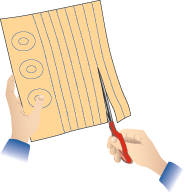 |
Cut 3 circles out of the tagboard. Two of them should be about 4 cm in diameter. The third should be about 3 cm in diameter. Punch a hole in the center of each of the circles such that for one of the 4 cm circles and for the 3 cm circle, it fits snugly over the dowel rod. For the other 4 cm circle, the hole should be large enough that it fits easily over the dowel rod. Cut 8 strips out of the tagboard. Each should be about 1.25 cm wide by 30 cm long. |
Glue one end of each of the 8 strips to one of the 4 cm circles. Try to get them evenly spaced around the circle. Glue this circle to the dowel rod about 3 cm from one end. |
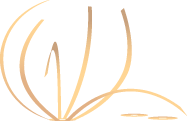 |
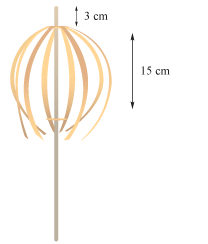 |
Slide the 3 cm circle over the other end of the dowel rod and glue it about 15 cm from the circle already glued on the rod. |
Now slide the remaining 4 cm circle over the free end of the rod and glue the tagboard strips to it. Again, try to make sure they are evenly spaced. Make sure that this end can still slide freely over the dowel rod.
Note: You can make this fancy by painting the dowel rod and paper. You can also do it by using construction paper, but the result is not as rugged or forgiving. You can also scale the dimensions and use a new pencil in place of the dowel rod.
You are now ready to explore what happens to a non-solid object when it is given a good spin. Roll the long end of the dowel rod between your hands. What do you see happen? What do you think this tells you about the formation of our solar system? About the shape of planets such as Jupiter? About the shape of stars such as our Sun?
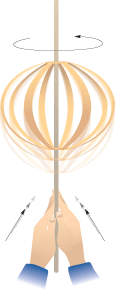 |
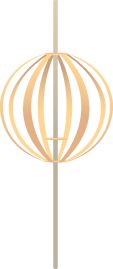 |
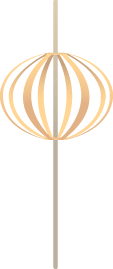
|
|
The image above shows the dowel rod being rotated between the palms.
|
The image above shows the model when it is still. Note the bottom circle is in a down position. |
The image above
shows what happens to the model when it is being rotated. The
bottom disk rises up as the model bulges out near its center. |
This activity is part of the StarChild site.
http://starchild.gsfc.nasa.gov/